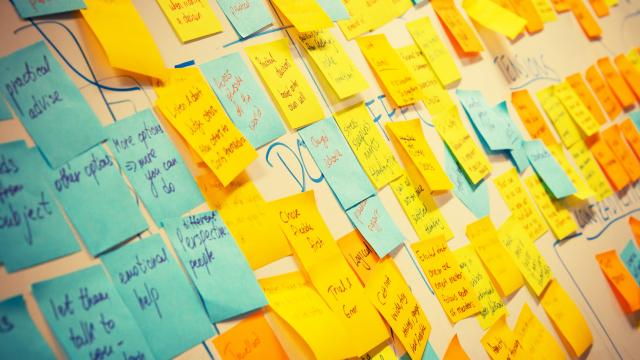Here is how many of us make our daily to-do lists: In the AM, fuelled by coffee and morning delusion, we jot down all the tasks we hope to accomplish in the next eight (or, let’s be real, 11 or 12) hours. But these lists, while well-intentioned, are often written haphazardly.
Photo: SkyLynx (Getty Images)
After crossing off a third of the items – emails, scheduling, maybe a few check-in meetings – we think, phew, I’m pretty tired now, and then end the day feeling as though we haven’t accomplished anything substantial.
To do deeper work that gets us closer to reaching our goals, our to-do lists should sync up with our energy levels. On the Rad Awakenings Podcast, Molly Crockett, an assistant psychology professor at Yale University, talked about the system she created for herself after constantly feeling paralysed by her massive list of tasks. She decided to divide her list into two columns: Easy and hard.
I tend to be very overwhelmed and demoralised by what I have to do, so I created a system where I have a [two column] list of things that require a lot of mental bandwidth and a list of things I can do at the end of the day when my energy is depleted. There’s an easy column and a hard one.
My daily goal, which is ridiculously low, is one item from each category. On most days I will do well more than [that], but I find it useful to set the bar really low in order to not get demoralised.
If it’s before lunch time and I’ve already done one from each column, then I find that motivating and get more done. But if I set a less achievable goal of three to four from each column, I’d halfway through the day realise that this wouldn’t happen and then it’s like “well, I broke my diet, so I might as well have two beers and chocolate cake” type of situation.
It makes sense to plan our days based on our biological rhythms, which vary by person. Daniel Pink, the author of When: The Scientific Secrets of Perfect Timing, explained this concept of “chronobiology” to The Washington Post: “There’s a period of day when we’re at our peak, and that’s best for doing analytic tasks things like writing a report or auditing a financial statement. There’s the trough, which is the dip – that’s not good for anything. And then there’s recovery, which is less optimal, but we do better at insight and creativity tasks.”
I prefer to do my “hard”, most intense work (which, for me, is writing) at around 10AM, after I’ve had a chance to wake up a bit, or late at night. The “easy” stuff can be sluggishly cranked out during the 4PM slump.
You can get even more specific when making your list. Many would place “emails” in the “easy” column, but as we’ve all experienced, there are some emails that are not so simple to write. You might consider it a success if you send one “hard” email and five “easy” ones. Own that win. It will help you to keep going.
Molly Crockett: The neuroscience of social media outrage [Rad Awakenings Podcast]

Comments